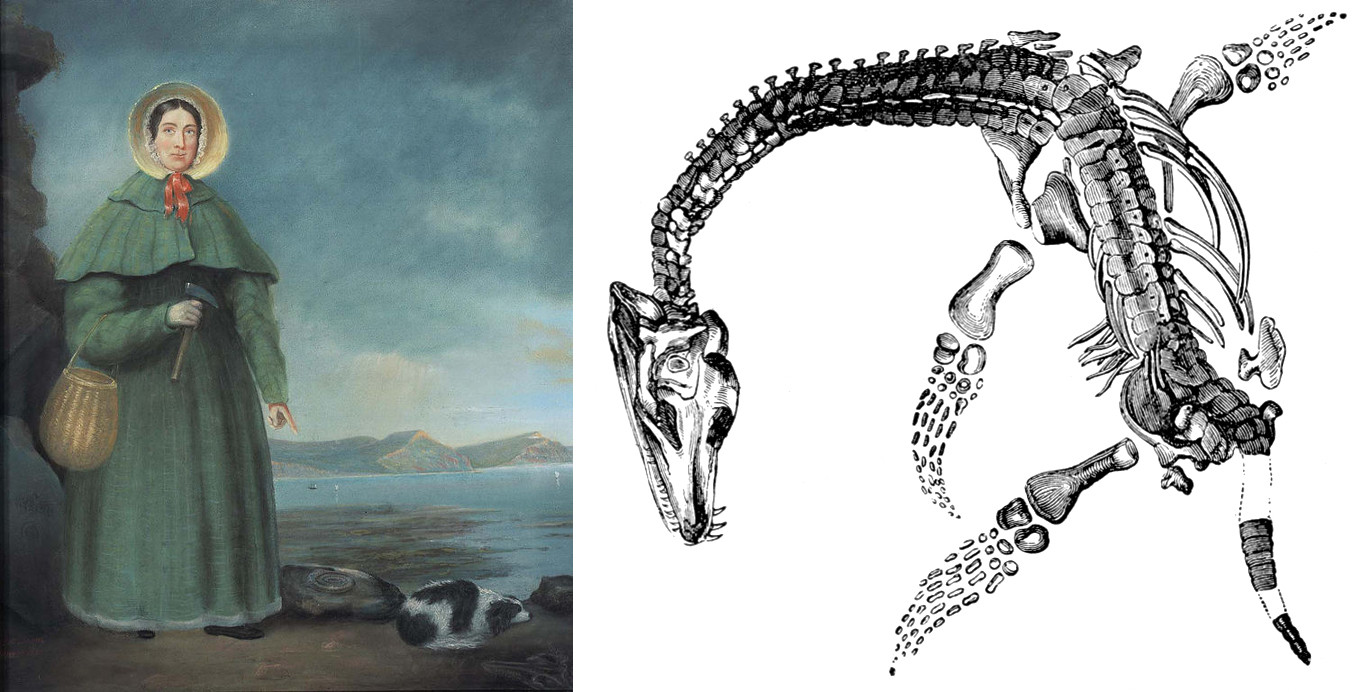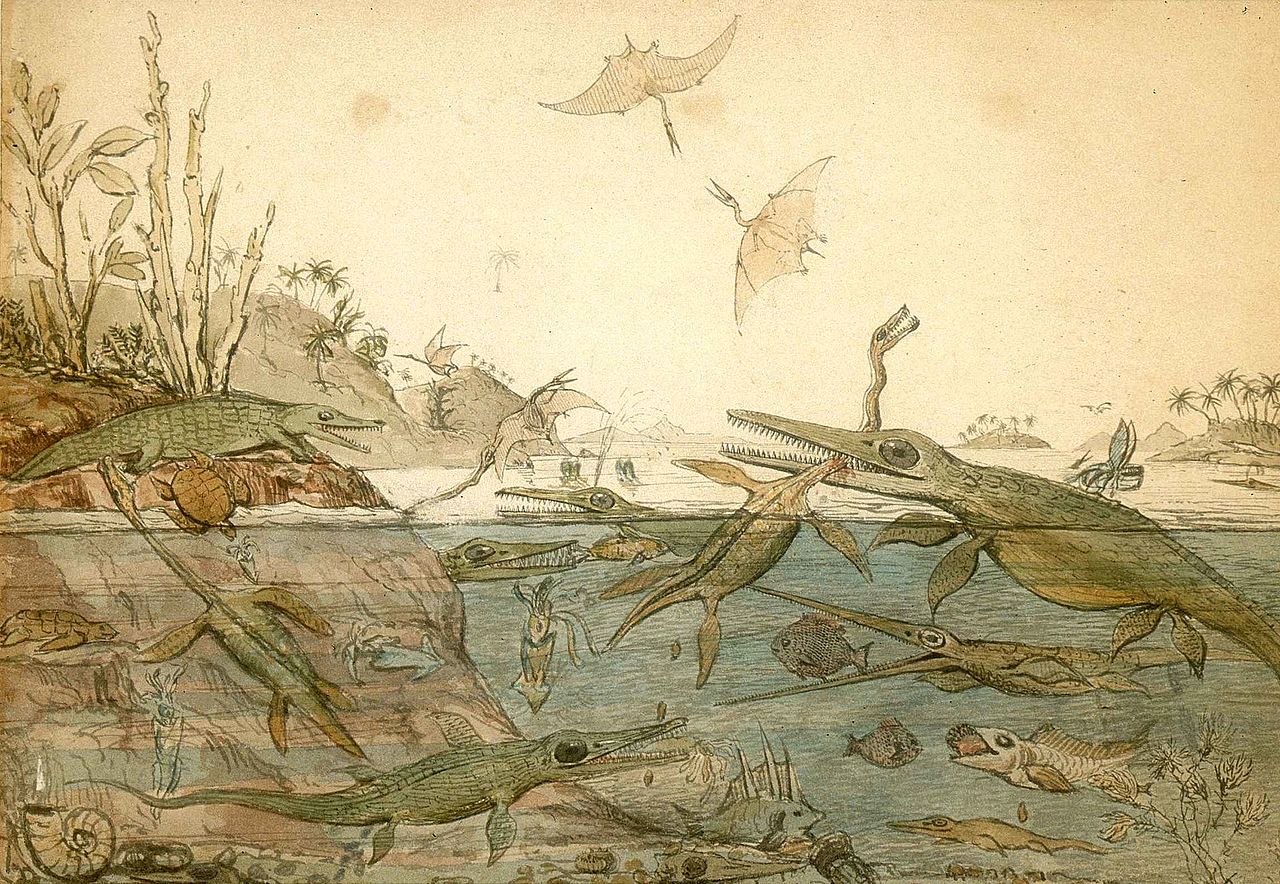
In 1804, when she was 5 years old, Mary Anning began to dig in the cliffs that flanked her English seaside town. What she found amazed the scientists of her time and challenged the established view of world history. In this week’s episode of the Futility Closet podcast we’ll tell the story of “the greatest fossilist the world ever knew.”
We’ll also try to identify a Norwegian commando and puzzle over some further string pulling.
Intro:
William Rowan Hamilton was so pleased with the fundamental formula for quaternions that he carved it into the bridge on which it occurred to him.
On Christmas morning 1875, Mark Twain’s daughter discovered a letter from the moon.
Sources for our feature on Mary Anning:
Shelley Emling, The Fossil Hunter: Dinosaurs, Evolution, and the Woman Whose Discoveries Changed the World, 2009.
Thomas W. Goodhue, Fossil Hunter: The Life and Times of Mary Anning (1799-1847), 2004.
Hugh Torrens, “Presidential Address: Mary Anning (1799-1847) of Lyme; ‘The Greatest Fossilist the World Ever Knew,'” British Journal for the History of Science 28:3 (September 1995), 257-284.
Crispin Tickell, “Princess of Palaeontology,” Nature 400:6742 (July 22, 1999), 321.
Adrian Burton, “The Ichthyosaur in the Room,” Frontiers in Ecology and the Environment 10:6 (August 2012), 340.
Tom Huntington, “The Princess of Paleontology,” British Heritage 26:2 (May 2005), 44-59.
Michael A. Taylor and Hugh S. Torrens, “Fossils by the Sea,” Natural History 104:10 (October 1995), 66.
Renee M. Clary and James H. Wandersee, “Mary Anning: She’s More Than ‘Seller of Sea Shells at the Seashore,'” American Biology Teacher 68:3 (March 2006), 153-157.
Peggy Vincent et al., “Mary Anning’s Legacy to French Vertebrate Palaeontology,” Geological Magazine 151:1 (January 2014), 7-20.
Michael A. Taylor and Hugh S. Torrens, “An Anonymous Account of Mary Anning (1799–1847), Fossil Collector of Lyme Regis, England, Published in Chambers’s Journal in 1857, and its Attribution to Frank Buckland (1826–1880), George Roberts (c.1804–1860) and William Buckland (1784–1856),” Archives of Natural History 41:2 (2014), 309–325.
Justin Pollard and Stephanie Pollard, “Mary Anning: Born 21 May 1799,” History Today 68:3 (March 2018), 22-23.
Sarah Zielinski, “Mary Anning, an Amazing Fossil Hunter,” Smithsonian, Jan. 5, 2010.
Shelley Emling, “Mary Anning and the Birth of Paleontology,” Scientific American, Oct. 21, 2009.
“Mary Anning,” Discover 38:4 (May 2017), 47.
“Mary Anning, the Fossil Finder,” All the Year Round 13:303 (Feb. 11, 1865), 60-63.
John P. Rafferty, “Mary Anning,” Encyclopaedia Britannica, May 17, 2018.
“Mary Anning (1799-1847),” University of California Museum of Paleontology (accessed May 27, 2018).
“Mary Anning,” University of Bristol Paleobiology Research Group (accessed May 27, 2018).

In 1830 the geologist Henry De la Beche painted this watercolor depicting every one of Mary’s finds — he sold lithographs and gave the proceeds to her. This increased her security, but apparently not beyond worry.
Listener mail:
Ryan Osborne, “‘America’s Spirit Animal 2018:’ Twitter Loves the Bear Who Ate Two Dozen Cupcakes,” WFAA, May 12, 2018.
Michael George, “New Jersey Baker Says Bear Broke Into Car, Ate 2 Dozen Cupcakes, Left Only Paw Print,” NBC New York, May 11, 2018.
Gene Myers, “Cupcake-Eating Bear Celebrated With Bear-Shaped Cupcakes by Bakery,” North Jersey, May 11, 2018.
Thomson Reuters, “Alaska Bear Falls Through Skylight Into Party, Eats All the Cupcakes,” CBC News, June 25, 2014.
Lindsay Deutsch, “Bear Falls Through Skylight, Eats Birthday Cupcakes,” USA Today, June 26, 2014.
Brendan Rand, “5-Year-Old Girl Attacked, Dragged by Black Bear,” ABC News, May 14, 2018.
Courtney Han, “5-Year-Old Girl Who Was Attacked and Dragged by Bear Is Released From Hospital,” ABC News, May 19, 2018.
To Tell the Truth, Jan. 17, 1966.
Wikipedia, “To Tell the Truth” (accessed June 9, 2018).
This week’s lateral thinking puzzle was contributed by listener Stefan, who sent this corroborating link (warning — this spoils this puzzle).
You can listen using the player above, download this episode directly, or subscribe on Apple Podcasts or Google Play Music or via the RSS feed at http://feedpress.me/futilitycloset.
Please consider becoming a patron of Futility Closet — you can choose the amount you want to pledge, and we’ve set up some rewards to help thank you for your support. You can also make a one-time donation on the Support Us page of the Futility Closet website.
Many thanks to Doug Ross for the music in this episode.
If you have any questions or comments you can reach us at podcast@futilitycloset.com. Thanks for listening!
